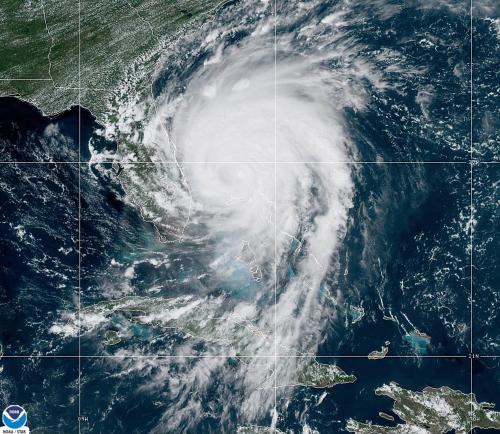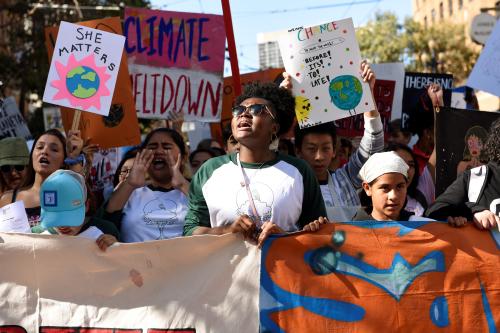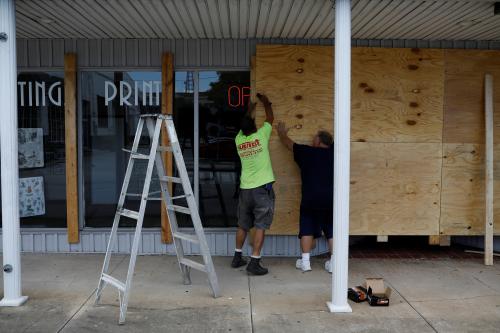Five years since Hurricane Katrina, the city of New Orleans and its region stand out as a bold experiment in rebirth and reinvention. This is pretty remarkable given the fact that this fifth anniversary is bookended by two of the worst disasters in history—Hurricane Katrina and the Gulf oil spill—with the worst recession in 50 years in between. That is a lot of “worsts” for one community to handle in five years.
This transformation also flies against the face of popular perception, or misperception.
When I tell people that I’ve been working on post-recovery efforts in New Orleans, this is what I often hear:
- “We’ve poured a lot of taxpayer funds into the Gulf region. What a waste.” (I was literally told that on my flight to New Orleans last week)
- “Nothing’s happening down there so why should we give them more money?”
- “The feds have done too much. When will New Orleans do their part?”
Well, new evidence from a report by Brookings and the Greater New Orleans Community Data Center reveals that promising developments are underway, debunking these myths. But it also offers a frank assessment of the major hurdles that remain and a roadmap to stay on the course to prosperity.
The new report, “The New Orleans Index at Five,” includes an analysis of the region’s performance along 20 indicators of prosperity, and a series of essays from local authors reviewing key reforms underway, including schools, housing, criminal justice and community engagement.
While economic trends in New Orleans metro area are still fluctuating from the impacts of the recession and the oil spill, there are early indications that greater New Orleans is rebounding, in some ways, “better than before” with several signs of a healthier economy, better social outcomes, and improved schools and basic services. Recovering “better than before” is a good thing because we don’t want taxpayer monies and other investments to replicate some of the serious problems that existed in the region prior to the storm.
Further, New Orleanians have risen to the occasion. They have organized as a community to establish a binding comprehensive land use plan, community-based health centers, neighborhood-based housing redevelopment, a more efficient and fair criminal justice system, a transformed public school system, and a new inspector general’s office to root out fraud, waste, and corruption. These reforms, driven often by broad citizen and civic engagement, demonstrate that New Orleans is serious about transformation and has the capacity to be an equal partner in recovery and reinvention. These efforts also show that New Orleanians are increasingly resilient, improving their capacity to adapt to future disasters, like the oil spill.
So, there is much to celebrate and build from, but many challenges remain. The region’s full reemergence is being held back by a sluggish economy overly dependent on a few shrinking industries, a small share of educated workers, wide racial and economic disparities, severe housing affordability constraints, and eroding wetlands.
With the Macondo oil well now capped and the federal efforts transitioning to a “recovery phase”, this report only reinforces the importance of building on the progress made since Katrina while also acting on the opportunities being presented by the oil spill. In particular, leaders need to pay close attention to the future of the regional economy and the coastline. Three of New Orleans’ biggest economic drivers have been declining, either for decades or since Hurricane Katrina, and the top two—tourism and oil and gas—have already been further weakened by the oil spill. As federal leaders begin to work with state and local leaders to adopt strategies to stem and reverse job losses and help displaced workers find jobs, they should be candid about how such strategies and investments can help the region strengthen and diversify its core industries.
And while New Orleanians had a wake up call after Katrina to embrace a more comprehensive approach to coastal protection, most of the efforts to date have been strengthening levees and other safety measures which are long-term barriers to sustainability. The latest disaster underscores the need to commit to and invest in the natural protections to the coast line—restored and healthier wetlands. Doing so could also have the added benefit of creating jobs and strengthening the region’s engineering and innovation might in coastal protection technology, products, and services.
In short, as greater New Orleans and the nation grapple with another crisis in the Gulf coast, they must not keep their eye off the long-term goal of transformation. The next wave of efforts and investments should aim to continue to reinvent the New Orleans as a prosperous region and reinforce its economic and cultural value to our nation.
To do otherwise would truly be a waste.



Commentary
New Orleans Five Years After: A Transformation Unfolding
August 11, 2010